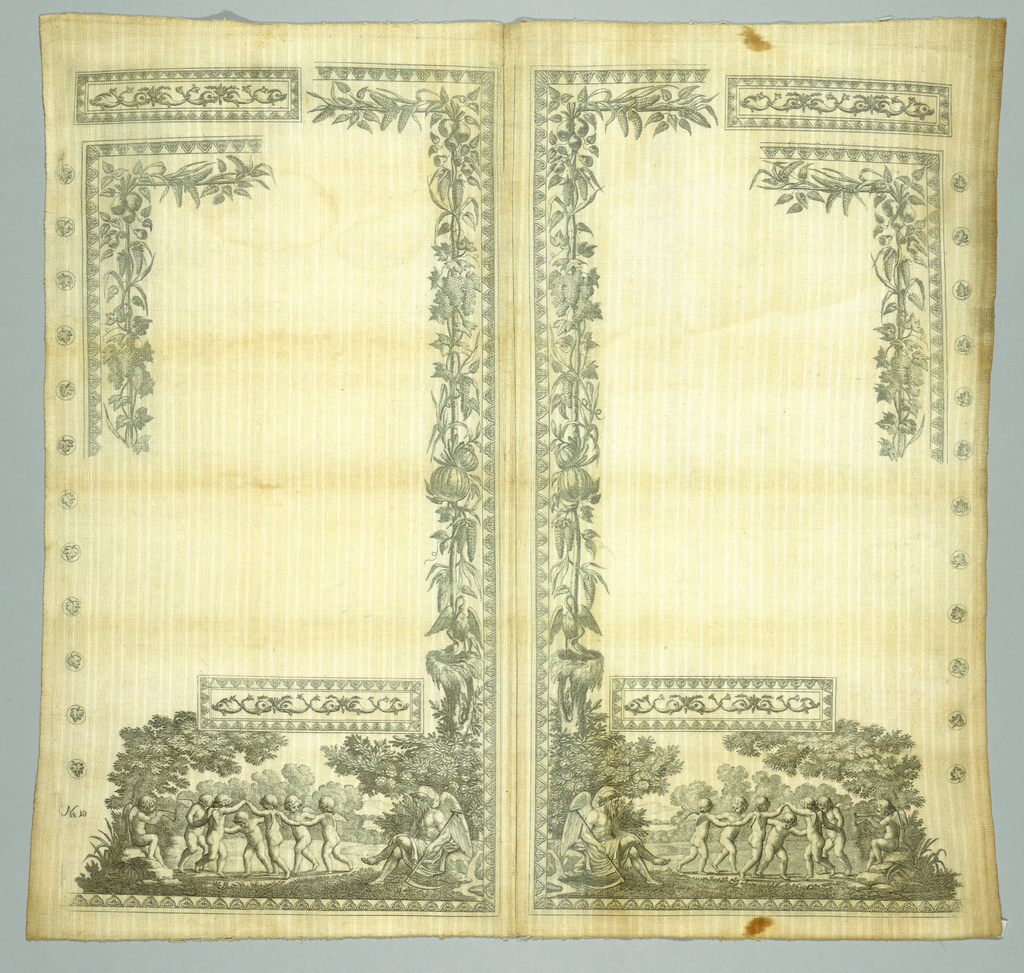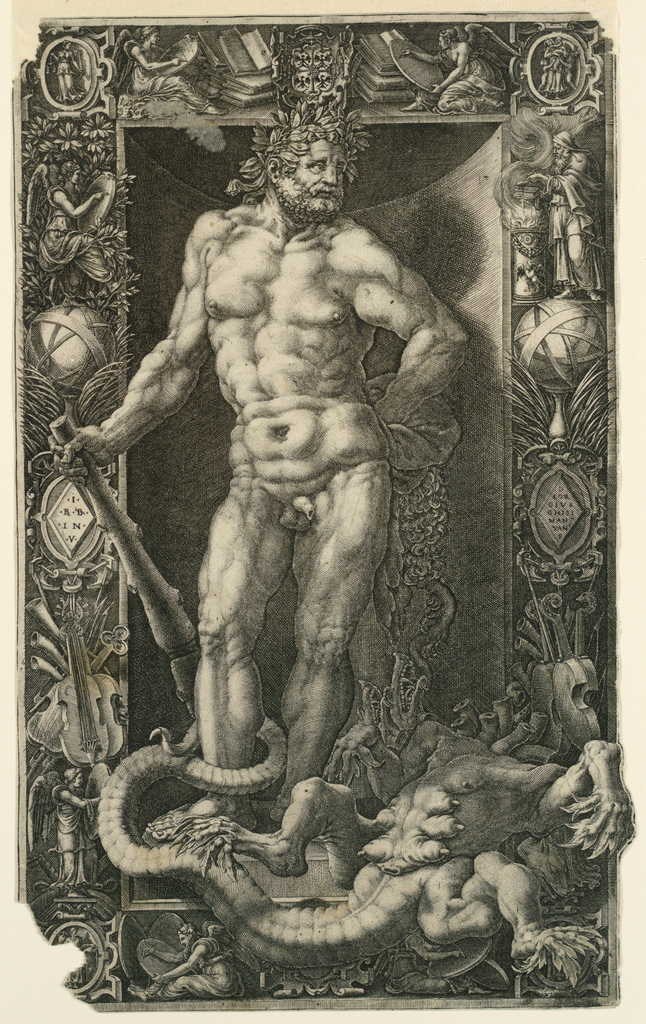Author: Virginia Pollock While this textile might seem unrecognizable to modern eyes, to consumers in eighteenth-century France this textile was an object of fashionable and economic significance. These uncut waistcoat fronts display the layout of a pattern, adorned with copperplate printed motifs of vegetal imagery, intertwined dolphins, and a wooded scene at the bottom with...
Author: Virginia Pollock The founding of Pennsylvania and the formation of William Penn’s “greene country towne” of Philadelphia is immortalized in this textile, intended for use as a furnishing fabric. Whereas today Penn’s dealings might be seen as part of a larger narrative of harmful and exploitative colonization, the printed images seek to convey Penn...
Sir Anthony van Dyck (1599-1641), knighted by King Charles I of England, was a Flemish painter renowned for his portraits of members of the British Court. Trained in Antwerp by Peter Paul Rubens (1577-1640), Van Dyck, like his teacher, experimented with making prints.[1] In the late 1520s or early 1530s, Van Dyck began an extensive...
Small Sofa for Count Bielenski, Grand Marshal of Poland is a print on white laid paper, etched and engraved by Gabriel Huquier (French, 1695-1772). It features a sofa or canapé designed in the Rococo style, framed by an interior wall decorated with carvings that mirror the graceful curvatures of the sofa’s structure. The goldsmith, sculptor,...
In the mid-eighteenth century, the British historian Thomas Birch (1705 – 1766) published a series of short biographies of famous figures from his nation’s past. Accompanying each of the 108 biographies was an engraved portrait of the subject, whose likeness was presented within an elaborate decorative setting.[1] These ornamental frames were designed by Hubert-François Bourguignon...
In 1946, the twenty year old artist Ruth Asawa entered the renowned, experimental Black Mountain College, where she studied for three years under mentors such as Josef Albers, Merce Cunningham and Buckminster Fuller. Born in California to Japanese immigrants, Asawa spent her childhood working on her family’s farm, until 1942, when the entire Asawa family...
In this richly ornamented print from the Drawings, Prints, and Graphic Design department, Giorgio Ghisi (Italian, 1520-1582) portrays Hercules’ success in completing his second labor in his print Hercules Victorious Over the Hydra of Lerna. This print was designed for a frontispiece for artist Giovanni Battista Bertani’s commentary, titled Gli oscuri e difficili passi dell’opera...
Beneath a foreboding sky streaked with lightning, a figure wanders through a cemetery. Barefooted and dressed in a monk’s habit, he seems to be missing something. Quite literally, it may be his head, whose snarling visage is directed out at the viewer from the crook of this gruesome monastic’s left elbow. But who is this...
This print by James Abbott McNeill Whistler is part of a series of images the artist produced depicting the East London neighborhoods of Rotherhithe and Wapping in 1859–60. While English painters had traditionally avoided portraying these industrial districts of the city throughout the nineteenth century, Whistler’s Thames series takes for subject the city’s poorest workers...








